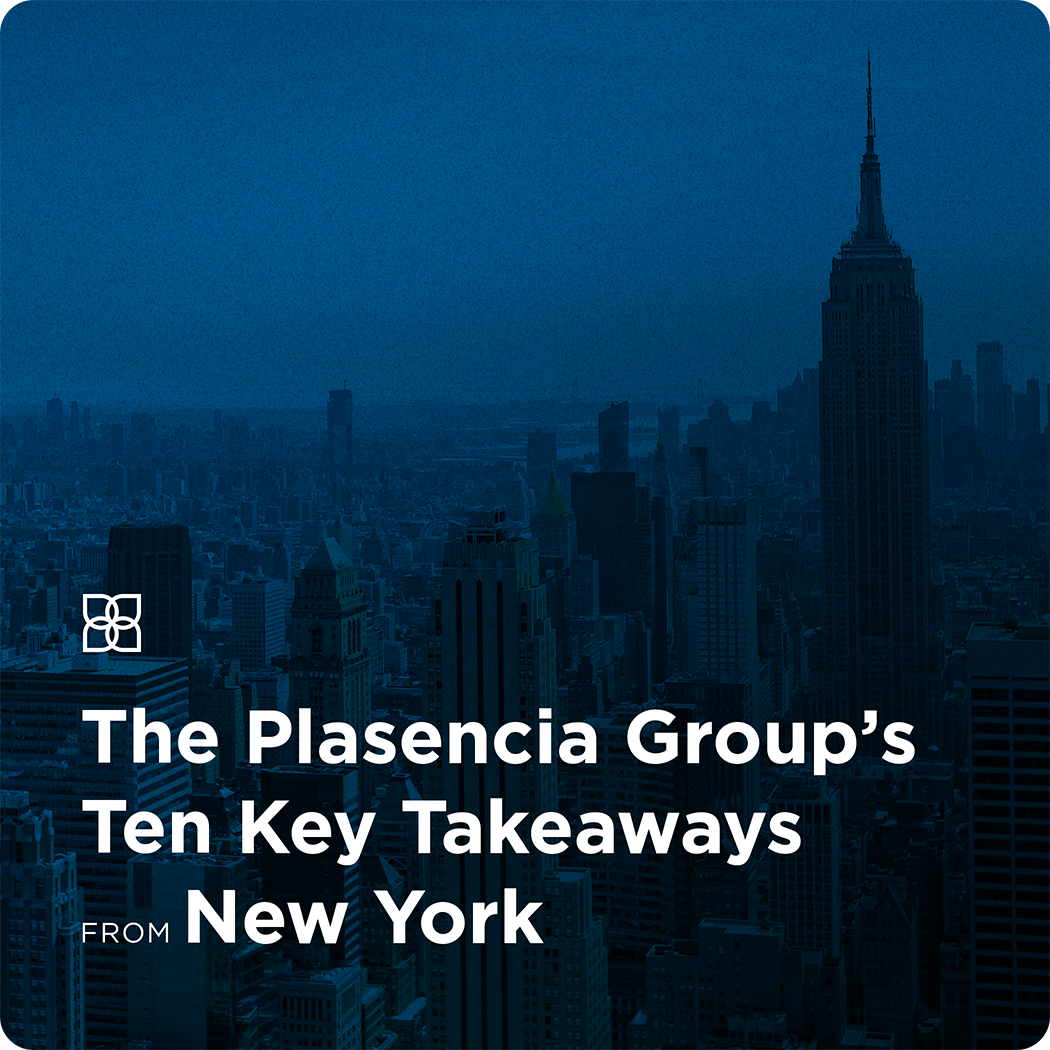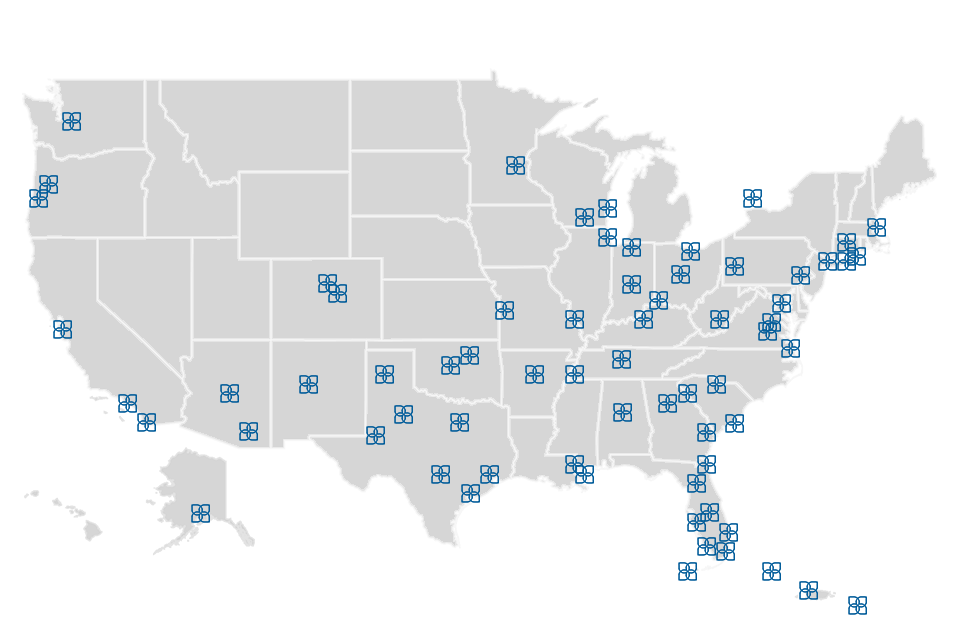
June 10, 2025, by The Plasencia Group
As always, it was a pleasure to see friends, colleagues, and clients in New York last week. From conversations we had with a wide range of industry stakeholders, we’d characterize the tone as generally neutral, with most attendees expressing a cautious optimism for the second half of the year while waiting for greater market clarity. There was broad consensus that significant capital remains on the sidelines, paired with assets that clearly need to transact.
We present below some additional takeaways from our meetings.
1. The Bid/Ask Gap
Hotel buyers lament that sellers are not yet capitulating on the bid/ask gap, summarily rejecting offers that they deem too low. We are hearing from our peers in the brokerage space that they have had to pull more assets from the market than they have closed of late. Some prospective sellers we spoke with reluctantly admitted that they will likely need to be the ones who bridge the majority of the valuation gap.
2. Interest Rate Waiting Game
Many lodging assets are capital-starved, with no obvious solution in immediate sight. Owners still holding these properties appear to be betting on interest rate declines to enhance their asset valuations and exit, rather than accepting current market conditions.
3. PIPs Loom Large
Brand-mandated PIPs make owning branded assets increasingly difficult. Multiple owners reported that brand renovation pressure directly induced their recent sales. Compounding this pressure, limited partners seeking to redeem and redeploy their capital are also starting to pressure general partners to sell.
4. New Investment Vehicles
Capital sources are reverting to preferred equity deployment over direct investments, similar to what the hotel industry experienced in 2020 and 2021. This more cautious approach will continue until interest rates decline at least another 50 to 100 bps.
5. Financing Readily Available
Financing markets for hotels remain relatively liquid, with the market baking in an 86 bp drop in SOFR, from the current 4.33% to 3.47%, over the next 12 months, per Bloomberg. It is interesting to note that interest rates are now at the 40-year average; this might just be a return to normal after years of extremely low rates. Refinancings are a very viable alternative to dispositions today.
6. Owner-operators Active
Select service hotels lead transaction activity, as owner-operators and regional groups capitalize on buying opportunities while other investors wait on the sidelines. Owners of these small hotels rely on established local and regional lending relationships and are willing to accept full recourse debt to obtain a lower cost of capital. These purchasers also value the current discount to replacement cost, which is as wide as it has ever been
7. Cap Rates Elevated
Hotel cap rates remain high and may go higher in struggling markets. Cap rates will drop when interest rates drop. When the market turns, it is those assets that have been the most stable performers during the past three years that will command the greatest interest and the highest pricing.
8. Performance Generally Flat
Hotel operating performance remains tepid. Our conversations with owners and operators revealed that only 30% to 40% of their hotel assets have met or beat 2025 budgets through May. International travel hesitancy threatens to weaken room demand further. Booking windows continue to shrink while future pace uncertainty intensifies as consumers and companies postpone travel decisions pending macroeconomic clarity.
9. Labor Challenged
Labor represents the biggest operating challenge for most hotel operators, driven by rising hourly costs and current immigration enforcement activities. Worker absenteeism has spiked, with sanctuary cities experiencing particularly acute staffing disruptions.
10. Low Supply Environment
On the bright side, elevated hotel construction costs are resulting in a reduction in new supply. If history repeats itself, the periods following declines in supply growth have been very lucrative for the lodging sector.
In Closing…
The tone of this year’s meetings is reminiscent of the sentiment we saw in 2010 and 2011, the period just after the GFC, when hotel transaction activity slowly began its rebound. That period immediately following the GFC was filled with apprehension and vacillation. As the future slowly became clearer, however, transaction activity dramatically picked up. Given the amount of dry powder sitting on the sidelines and the need most hotel owners have to redeploy capital, we expect transaction activity to pick up dramatically once there is slightly more clarity in the global economic picture.
For more valuable hospitality industry news and analysis, opt-in to our communications list. If The Plasencia Group may be of assistance at any point throughout the entire lifecycle of your hotel, resort, or portfolio investment, reach out to any one of our skilled investment advisors today to start the conversation.


